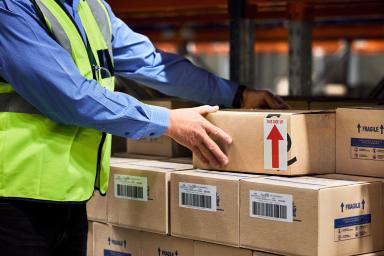Making your workplace COVID-secure
How to ensure your premises are safe for staff, visitors, tradespeople and others during coronavirus.
When the Government announced plans in May 2020 for businesses to return to work after the COVID-19 shutdown, it emphasised the need for all workplaces to be “COVID-secure”.
But what does this mean in practice?
Simply put, a COVID-secure workplace is one which has been made as safe as possible for staff, visitors, tradespeople and anyone else who might spend time there while the coronavirus risk remains.
But because businesses vary so widely, and operate from such diverse premises and sites, there’s no one way to make a workplace COVID-secure.
Instead, each business must consider the official government rules and guidance and take from it what specific measures it should implement to protect its workers, visitors and other people.
Assessing risks around coronavirus
As an employer, you already have a legal duty to protect the health and safety of your employees, visitors and others.
But a key element of the new government guidance around COVID-19 is the need to:
- assess the risks of coronavirus transmission within your workplace
- put measures in place to control them.
Carrying out a COVID-19 risk assessment means taking the following steps:
Identifying the hazards
In a COVID-19 risk assessment, there's ultimately only one hazard, and that's the spread of coronavirus.
As a result, you need to consider all the ways in which people could transmit COVID-19 once they are on the premises.
For example, it might be through:
- poor handwashing
- inadequate procedures for cleaning and disinfecting surfaces and equipment
- insufficient social distancing
Identifying who is at risk and how
Once you know the risks, you must then establish who they could harm.
Obviously, you're going to include employees in your assessment, but also consider people such as:
- customers and visitors
- cleaning staff
- contractors
- drivers
- passers-by (if this applies)
Also be mindful of those individuals who might be particularly vulnerable, such as:
- elderly people
- pregnant women
- people with existing underlying health conditions
As you identify who is at risk, you'll also be thinking about how.
Make sure you consider the ways in which employees come into contact with other people, whether that's travelling to work, at work or at home.
Evaluating and controlling the risks
Now you have a clear idea of the risks and who they might harm, you must take measures to reduce them as much as possible.
If you've done risk assessments before, you might be familiar with the hierarchy of hazard control.
This system ranks the different types of controls for reducing risk, from most effective to least effective, as follows:
- Elimination
- Substitution
- Engineering controls
- Administrative controls
- Personal protective equipment (PPE)
When it comes to COVID-19, the general thinking is that you won't be able to eliminate or substitute the risks completely.
That means you can focus on implementing the other three measures:
- Engineering controls - physical changes to the workplace, such as erecting screens between workers or installing additional ventilation
- Administrative controls - for example, cleaning procedures, adding signage, putting social distancing markings in place, and making adjustments to certain work tasks
- Personal protective equipment (PPE) - providing and using equipment such as masks, respirators, gloves and hand sanitiser
Recording and sharing your findings
The Government's advice is to record the findings of your risk assessment and share them with your workforce.
You might do this by:
- publishing them on your website or intranet
- sending a company-wide email
- holding meetings
- displaying posters.
The idea is to reassure employees that they are going to be safe at work and to involve them in managing the risks around COVID-19.
Your staff have their own role to play in making sure your workplace is COVID-secure.
Social distancing
Social distancing remains essential in the Government's drive to restrict the spread of COVID-19.
Part of your COVID-19 risk assessment will be determining how you can keep your employees a safe distance (at least two metres) apart at all times.
This means considering where and how your staff come into contact with each other, then working out ways to maintain the necessary distancing.
Measures you can implement here include:
- using social distancing markers
- introducing one-way systems
- displaying signs to remind workers to distance
- keeping communal areas (such as kitchens) closed
- taking desks out of use, and prohibiting hot-desking.
There may be factors that prevent you from properly maintaining social distancing.
In this case, you must do everything possible to prevent the risk of coronavirus transmission.
Measures you can take include:
- asking staff to wear face coverings
- making them work beside each other rather than opposite
- erecting dividing screens or barriers
- staggering working hours, so groups of workers arrive and leave at different timesv
Cleaning and hygiene
COVID-19 can spread between people via contact with infected surfaces.
Making your workplace COVID-secure means introducing strict procedures around hand-washing, cleaning and hygiene, and making sure people follow them at all times.
These procedures include:
- making hand sanitiser available around the premises
- cleaning and disinfecting working areas and equipment between uses
- cleaning and disinfecting surfaces
- setting clear guidance for how toilets are used and cleaned
- using signs and posters to promote good handwashing and hygiene practice
You might also choose to deep-clean the whole building before staff, visitors and others return.
Disclaimer: We make reasonable efforts to keep the content of this article up to date, but we do not guarantee or warrant (implied or otherwise) that it is current, accurate or complete. This article is intended for general information purposes only and does not constitute advice of any kind, including legal, financial, tax, or other professional advice. You should always seek professional or specialist advice or support before doing anything on the basis of the content of this article.
Neither British Business Bank plc nor any of its subsidiaries are liable for any loss or damage (foreseeable or not) that may come from relying on this article, whether as result of our negligence, breach of contract or otherwise. “Loss” includes (but is not limited to) any direct, indirect, or consequential loss, loss of income, revenue, benefits, profits, opportunity, anticipated savings, or data. We do not exclude liability for any liability which cannot be excluded or limited under English law.
Tags related to this content:

Making business finance work for you: Expanded edition
Our Making business finance work for you: Expanded edition is designed to help you make an informed choice about accessing the right type of finance for you and your business.



